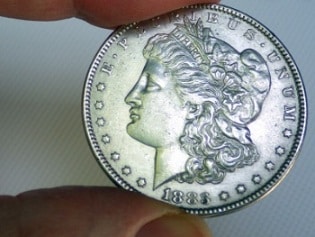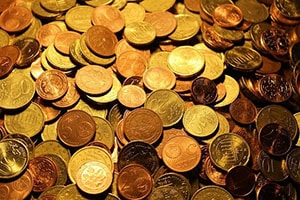 The Greek word nómisma came to Latin as numisma , which can be translated as "currency." This term, in turn, allowed the creation of the French notion of numismatique .
The Greek word nómisma came to Latin as numisma , which can be translated as "currency." This term, in turn, allowed the creation of the French notion of numismatique .
That is the etymological journey of numismatics , a concept that refers to the analysis and collecting of medals and coins , especially those that are of considerable antiquity. The expert in this area, as well as everything linked to it, is known as a numismatist (or numismatics, in feminine terms).
Numismatics is based on the research of medals, coins, banknotes and other related items . Both the collecting of these objects and their study go back many centuries.
If we consider it a science itself, then its origins are in the 19th century, although at that time it did not become such an important area but rather began very slowly. The testimony that it can give us about the economy and its evolution throughout history in the many peoples around the world is truly invaluable, since it also covers other areas, such as religion, geography and politics.
In particular, we can say that the following sciences and areas of knowledge are those that are most related to numismatics:
* epigraphy : this science serves as support for history. It focuses on the study of inscriptions taking into account parameters such as their shape, their materials, their structure and the support in which they are found, without leaving aside their content and the function with which they were conceived;
* paleography : science dedicated to studying the writings of the past. Among the tasks it includes are its deciphering, the analysis of its evolution, the determination of its production date and the search for all the graphic evidence of each of them;
* symbology : is the study of symbols, both isolated and together, if applicable. Since its interpretation depends on different social and historical issues, it is an arduous work that requires great rigor before proposing a result;
* iconology : it is a branch of the previous one, which studies both images and the symbolic value assigned to them. In this work, several fields are also combined, from religion to laws, since art can represent human values, figures of living beings, nature, etc.;
* art history : the evolution that art has gone through over time. Any activity that someone carries out with an aesthetic or communicative objective, through which emotions, ideas , or a particular vision of life are transmitted, is considered art.
 Although in most sources numismatics is not divided into categories, some do distinguish the following two:
Although in most sources numismatics is not divided into categories, some do distinguish the following two:
* doctrinal : studies certain generalities such as classification and nomenclature;
* historical and descriptive : focuses on the way the currency developed in the towns.
Thanks to numismatics, it is possible to know various aspects of the economy and commercial activity of peoples of the past. The products studied even provide interesting data on religion , geography , art , politics and other areas based on their designs and content.
It is important to keep in mind that the exchange itself of commerce has mutated throughout history . As a measure of change, available items, such as teeth or animal skins and textile fibers, were first used. Then metals began to be used as currency. Today's numismatics, in this framework, is dedicated to studying money in all its forms, often including checks , bonds , etc.
Numismatics, in short, produces information about the historical trajectory and characteristics of coins, banknotes and substitute goods. Their contributions are valuable to scientific researchers and collectors.
